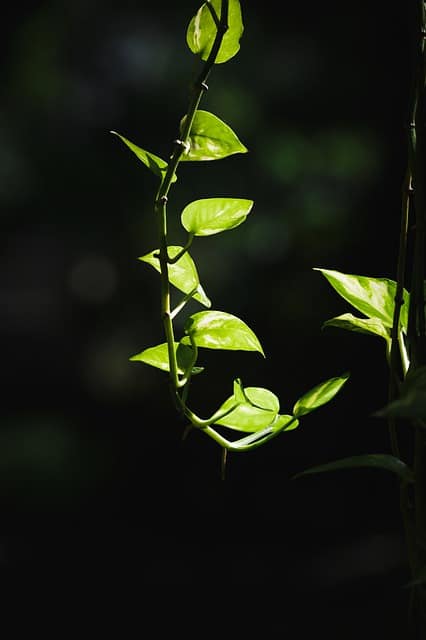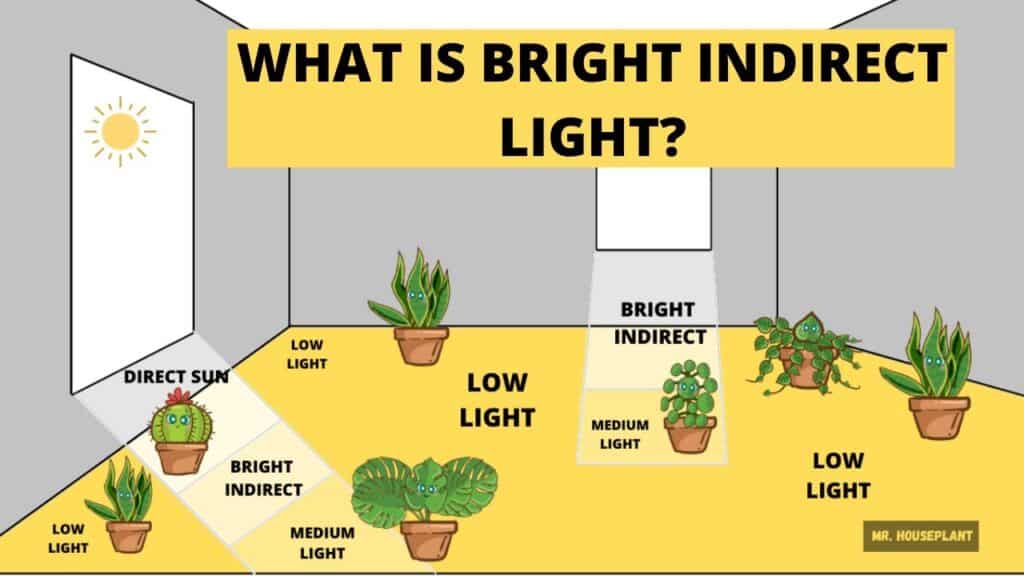Many Newbie growers assume that Philodendron and Pothos plants are alike because of similar leaf appearance and care requirements.
Truth be told –they are not the same plant!
Although they share the same ancestry and boast many similar appearances, they are primarily different species.
Pothos and Philodendron are different aroid species where Pothos boast thick leaves and grow to an astounding 40-feet height. In contrast, Philodendron boasts wider, thin leaves, with only the vining species growing over 40 feet.

Similarly, Pothos retains more water, is drought-tolerant because of the thicker leaves, and is slightly cold-hardy.
Pothos is a hardier plant that grows faster, but Philodendron will excel in terms of appearance.
Read on to figure differences and similarities between the two to determine which one to buy.
Table of Contents
Is Pothos the Same as the Philodendron?
Although they share the same ancestry (aroid plants), they are different plant species with distinct characteristics and needs.
Pothos will naturally climb higher and produce lush leaves, whereas only a vining species of Philodendron would climb high.
Therefore, not all Pothos species resemble a Philodendron!
Here is a summarized table with the significant differences between the Philodendron Rio and Pothos.
| Characteristics | Pothos | Philodendron Rio |
|---|---|---|
| Scientific Name | Epipremnum Aureum | Philodendron Hederaceum Rio |
| Common Name | Money plant or Devil’s ivy | Heartleaf Philodendron |
| USDA Zones | 10-12 | 9-11 |
| Origin | The Indian subcontinent, South East Asia, and China | Central America and Brazil |
| Leaf Color | Lighter green shade | Green with cream color stripes |
| Leaf Size | 4-8 inches (10-20cm) | 2-4 inches (5-10cm) |
| Leaf Fullness | Thick and waxy | Thin |
| Height | 6-8 feet (Ornamental) Over 40 feet (Trailing) | 12-30 inches |
| Growth Rate | 12 inches per month (Fast) | Moderate to Fast |
| Root growth | Single aerial root per node | Numerous roots per node |
| Cold hardy | Slight | None |
| Availability | Widely available | Rare |
Philodendron Rio vs. Pothos: What’s the Difference?
Let us talk about the differences between Philodendron Rio and Pothos in detail.
1. Plant Taxonomy
The primary difference between Philodendron Rio and Pothos is the genus or nomenclature.
According to the Plant Taxonomy, Pothos belongs to the Epipremnum genus native to the flowering Araceae family of Asia.
On the other hand, Philodendron Rio belongs to the Philodendron species that grows in the tropical regions of Central America and Brazil.

There are over 900 species of Philodendron, while Pothos hardly boasts about 38 varieties.
However, one could not tell the genus simply by looking at the plant. Therefore, you need to assess a few more differences before deciding further.
2. Place of Origin
Philodendron Rio is a pan-tropical plant that naturally grows in the rainforests of Brazil and riverbeds.
As their cultivars are widely spread across the tropics, you would also find them growing in the Caribbean Islands.
Experts believe this plant has descended from Philodendron Brazil, another beautiful Philodendron plant.

Pothos is naturally found in the wilderness of the Indian subcontinent, China, and various Pacific and Indian Oceans islands, trailing upwards along with the trees and other plants.
Because of its wide availability in the region, many households in the Indian subcontinent and Southeast Asia grow Pothos at home.
3. Leaf Color, Size, and Texture
One of the distinct features of Philodendron Rio is the foliage color and size.
Philodendron Rio boasts a heart-shaped leaf with elongated ends, where each leaf has a rounded base and pointed tips. The deep curve at the end of the stem gives it a perfect heart shape.
Pothos also give out heart-shaped leaves but with a straight base instead of a curved base innate to Philodendron.

Similarly, a Pothos leaf may grow up to 4-8 inches (10-20cm) in length, depending on the condition. On the other hand, most indoor-grown Pothos only reach about 4 inches (10cm) in length.
Philodendron Rio leaf will hardly reach 4 inches (5-10cm) in length.
If you touch the Pothos leaves, you will find them to be thick and waxy in texture, something Philodendron severely lacks.
The waxy Pothos leaves help to retain more water, making it slightly drought-tolerant.
4. Growth Habits
The growth habit of Pothos is relevant to vining plants that proliferate primarily to climb upwards.
The multiple nodes on the Pothos stem will grow out into individual branches that will continue growing upwards.
On the other hand, Philodendron Rio will only attain a limited height before it goes into maturity.
A freely trailing Pothos will reach over 40 feet, but an ornamental plant will only go up to 8 feet. Philodendron Rio will hardly attain a height of 12 inches, but what it lacks in growth will compensate with a beautiful set of leaves.

Another way to tell the difference between Pothos and Philodendron Rio is the presence of cataphyll (sheaths).
Philodendron Rio naturally grows cataphylls that protect the new leaf as it grows. It will eventually dry up and fall.
On the other hand, Pothos do not grow cataphylls, and new leaf growth is exposed to elements.

Similarly, it will grow about 12-inches per month when provided with enough water, humidity, and sunlight.
On the other hand, Philodendron Rio will hardly grow a few inches every year.
5. Height and Structure
Philodendron grows to double its size every year, reaching a mature height of 12-30 inches.
Some vining Philodendron can reach over 40 feet, but not Philodendron Rio. Therefore, it is often grown as an ornamental plant.
On the other hand, Pothos is a vining species that will reach over 40 feet when provided with trellis and support.

An ornamental Pothos will hardly get over 6 feet. Both Philodendron and Pothos require ample indirect sunlight, watering, and occasional fertilization to attain a healthy structure.
6. Aerial Roots and Petioles
You can tell the difference between Philodendron and Pothos by looking at their aerial roots. Both plants boast aerial roots that only differ in size and structure.
Philodendron boasts thin, clustered aerial roots that are more extensive. These tiny aerial roots resemble a root system of their own that helps to absorb more oxygen.
On the other hand, Pothos grows a large, thick root per node.

Compared to Philodendron’s aerial roots, Poths will have limited aerial roots but are essential in helping the plant climb higher.
Similarly, the Philodendron petiole is wholly round and uniform, whereas the Pothos petiole has an indentation and is less round.
Petioles are tiny stems that connect the leaves to the plant’s stems. Philodendron has thinner petiole compared to Pothos.
7. Varieties and Variation
Talking about varieties, Philodendron boasts over 900 sub-species with different colored leaves, growth habits, and structures. Some are vining plants, while others are shorter shrubs.
On the other hand, Pothos boasts only a handful of species that closely resemble each other.
Both species boast variegated cultivars, but Pothos have more forms of the variegated plant.

Gold-hued Golden Pothos, Jade Pothos, and Marble Queen Pothos are a few variegated Pothos species.
Ace of Spades and Philodendron Brasil are two Philodendron sub-species that grow rich, variegated leaves.
8. Their Life Span
Age is another factor that differentiates between Pothos and Philodendron plants.
Depending on the growing environment, a Pothos grown indoors can live up to 10-15 years. Pothos in the wild can live as long as 15-20 years.
However, Philodendron Rio will have a longer life span, whereas a healthy plant can survive for 20 years or more as a houseplant.
Philodendron found in their natural habitat lives upward of 100 years and blossom multiple times in an attempt to attract a pollinator.
9. Price of Philodendron Rio vs. Pothos
Philodendron Rio will typically cost more than Pothos. Pothos makes one of the affordable plants to have around because they are easily propagated and widely sold by local nurseries.
On the other hand, some varieties of Philodendron are pretty rare and slightly expensive as they are hard to acquire.
A Philodendron Rio costs $65, while Pothos varieties come for $10 -$79 on Etsy.
Similarities Between Philodendron and Pothos
Being pan-tropical aroid plants, Philodendron Rio and Pothos tend to share a lot of similarities.
Here is an overview of the similarities between the two plants.
| Factors | Similarities |
|---|---|
| Lighting | Bright, indirect, or diffused sunlight 8-10 hours daily |
| Temperature | Warm temperature between 65°F - 85°F |
| Relative Humidity | Between 50-70% relative humidity |
| Ideal Soil Mixture | Well-drained, airy potting mix with organic materials |
| Watering Requirement | Weekly watering in spring and summer with a cutback on winter |
| Fertilizer Requirement | Balanced fertilizer every 4-6 weeks in the growing season |
| Toxicity | Toxic to both humans and animals |
| Propagation | Stem cutting and root division |
1. Indirect Lighting
Both Philodendron Rio and Pothos thrive in bright yet indirect or diffused sunlight for 8-10 hours a day.
They are naturally found growing under the shade of large trees; hence, you should mimic the same condition at home.
Therefore, they would do well in moderate to bright light conditions close to windows, doors, or patios.

However, avoid keeping them in low-light areas that may slow the plant growth and direct sunlight to prevent leaf burn.
Similarly, providing artificial light such as LED grows light for optimal growth in winter.
2. Warm Temperature
Both Philodendron Rio and Pothos are pan-tropical species that thrive in warm temperatures around the year.
Provide anywhere from 60-85°F (16-30°C) temperature to ensure healthy growth.
Both plants are prone to low temperature, where anything under 55°F can stunt the plant and lead to dropping foliage.

Anything over 90°F can suck the plant dry and cause wilted, crisp leaves from transpiration (loss of water from the leaves).
Pothos plants are drought tolerant, but Philodendron will quickly curl from transpiration and die.
3. Moderate to High Humidity
Being tropical plants, both Philodendron Rio and Pothos typically thrive in moderate to high humid conditions.
Tropical plants have a higher humidity requirement than other houseplants to maintain healthy leaves.
Provide anywhere from 50% to 70% relative humidity to Philodendron Rio and Pothos around the year.
Humidity anything under 50% will dry out the plant, whereas higher humidity above 70% can lead to fungal infection and root rot.
Install a room humidifier to maintain an appropriate humidity level as a solution.
4. Airy Potting Mix
The aroid plants enjoy in well-draining, loose soil mix as it allows the roots to breathe.
Both Philodendron Rio and Pothos thrive in a similar potting mix that is loose and well-draining.
Ensure to provide an organic soil mix prepared from 60% peat moss and 30% perlite, coco peat, and charcoal.
The fast-draining capability of the soil helps keep the roots dry while allowing the airy roots to get an adequate amount of oxygen.
Similarly, ensure the soil mix is slightly acidic to neutral (6.0-7.0 pH).
Here are a few recommendations
5. Regular Watering
Regular watering is one of the fundamental similarities between Pothos and Philodendron Rio.
Both plants thrive in slightly moist soil conditions attained by weekly watering. Ensure to water your plant once a week or every nine days in summer and spring.
However, cut back watering in fall and winter to once a fortnight when the plant goes into dormancy.
Remember, both plants can tolerate slightly under watering conditions than overwatering, quickly leading to waterlogged problems.
To avoid inappropriate watering, make a schedule or use a soil moisture meter to check the soil moisture level.
Similarly, use distilled or chlorine-free water to prevent salt and mineral buildup in the soil.
6. Monthly Fertilization
Although Philodendron Rio and Pothos naturally retain nutrients from soil organisms for consistent growth, they do best with regular fertilization.
Since both plants are not heavy feeders, you can resort to mild, balanced plant food.
Apply all-purpose, balanced fertilizer 10-10-10 or 20-20-20 every 4-6 weeks in the growing season.
Most household fertilizers will suffice; however, ensure to dilute the solution to half strength by mixing with water.
Here are a few recommendations.

7. Plant Toxicity
The stark similarity between the two plants is toxicity, which can cause poisoning in both humans and pets.
The plants are known to produce insoluble calcium oxalate crystals that may cause mild to severe poisoning when consumed.
The plant’s toxicity is mild in humans and may only cause oral irritation, burning of the mouth, etc.
However, it will lead to severe poisoning in pets, especially cats and dogs, causing tongue swelling, vomiting, and difficulty breathing.

Better call Poison Control Center or APPCC at (800) 222-1222 if you suspect your pet has consumed the parts of the plants.
8. Propagation Methods
Both Philodendron Rio and Pothos are easily propagatable and will render successful results.
You can choose to propagate them through stem cutting and root division, where stem cutting is a more common method.
Ensure to take a healthy stem cutting with a couple of leaves and root it in a water medium or soil.

You can attempt for root division method when repotting the plant in early spring or summer.
However, be wary about cutting the main root bulb but feeder roots, leading to a sick plant.
Read more: Philodendron Rio: Ultimate Grow & Care Guide
Benefits of Growing Philodendron Rio and Pothos
Both Philodendron and Pothos will offer intrinsic medical, aesthetic, and environmental benefits, no matter which plant you choose to grow.
- The NASA Clean Air Study claims that Philodendron Rio and Pothos leaves effectively trap airborne toxins such as benzene, formaldehyde, toluene, and carbon monoxide from the indoor air.
- They work as a natural humidifier by boosting oxygen molecules in the air.
- The exotic plant leaves will add decor and a soothing smell to the air.
- The rich green color is linked to feelings of buoyancy and boosts endorphins.
- Philodendron bipinnatifidum (Araceae) stem effectively treats inflammation, orchitis, and rheumatism.
- They are easy to care for plants that require minimal maintenance.
FAQs about Philodendron vs. Pothos
Do Philodendron Rio and Pothos Share any Common Problem?
Yes, both Philodendron Rio and Pothos are tropical plants prone to fungus infestation, especially when overwatered.
The symptoms will include wilting leaves, premature yellowing, black stems, and root rot.
Begin preparing a watering schedule and cut back on watering until the plant revives.

What are Some Common Pests in Philodendron Rio and Pothos?
The sap-sucking insects like scales, aphids, and mealybugs are commonly found in homegrown Philodendron and Pothos.
Rubbing the plant with a soapy water solution, insecticidal soap, or Neem oil will eliminate pests.
Alternatively, you can apply pyrethrin spray to kill all kinds of pests effectively.
Can Philodendron and Pothos Plants Grow Together?
Yes, you can grow both Philodendron Rio and Pothos together as they share common traits and care.
They are not only similar in their appearance but also their requirements.
In fact, growing them together will help boost the relative humidity level.
Philodendron or Pothos: Which One is Better?
It all comes down to your choice and preference because both plants are excellent in appearance and benefits.
In fact, they both make beautiful houseplants that work around the clock to add decor and cleanse indoor air.
Philodendron Rio will comfortably grow in a small space as it hardly grows over 2-feet, whereas vining Pothos will take up significant floor or wall space.
Other than that, both plants’ care requirements and maintenance are the same.
Related Article: Find out the difference between Lemon Lime Philodendron and Neon Pothos.
